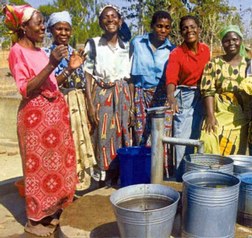 The Malda Pump is a direct action pump for Low Lift Wells. It uses a buoyant pump rod that helps to reduce the forces on the handle. It is designed for heavy-duty use, serving communities of 300 persons. The maximum recommended lift is 15 m. The Malda Pump is a public domain pump defined by RWSN specifications. The Malda Pump is fully corrosion resistant. It is easy to install and has excellent potential for community-based maintenance.
The Malda Pump is a direct action pump for Low Lift Wells. It uses a buoyant pump rod that helps to reduce the forces on the handle. It is designed for heavy-duty use, serving communities of 300 persons. The maximum recommended lift is 15 m. The Malda Pump is a public domain pump defined by RWSN specifications. The Malda Pump is fully corrosion resistant. It is easy to install and has excellent potential for community-based maintenance.
The Malda Pump as a direct action pump is based on a buoyant pump rod that is directly articulated by the user, discharging water during the up- & down stroke.
Material
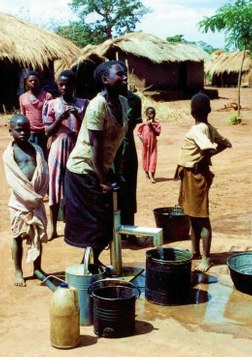 Pump stand, standing plate and handle are made of galvanised steel, wearing sleeve of stainless steel, pump rods and rising main of HDPE pipe and plunger & foot valve are also made of HDPE.
Pump stand, standing plate and handle are made of galvanised steel, wearing sleeve of stainless steel, pump rods and rising main of HDPE pipe and plunger & foot valve are also made of HDPE.
This makes the Malda Pump completely corrosion resistant.
Local manufacturing
The Malda Pump is specially designed for production in developing countries.
Installation
The installation of the Malda Pump is very easy and does not need any lifting equipment or special tools. The rising main with foot valve and pump head as well as the pump rod with handle and plunger can be assembled on the ground. When laid next to each other, the correct length can be checked. For installation both, rising main and pump rod do not need to be dismantled again.
Technical data
| Depths for use: | between 0-15 m |
| Cylinder diameter: | 50 mm |
| Maximum Stroke: | 410 mm |
| Approx. discharge (75 watt input): | at 5 m head: 3 m³/hour, |
| at 10 m head: 1.8 m³/hour, | |
| at 15 m head: 1.2 m³/hour, | |
| Pumping lift: | 1 - 15 m, |
| Population served: | - 300 people, |
| Households: | 30 - 50 hh, |
| Water cons.: | 15 - 20 lt/per capita, |
| Type of well: | borehole or dug well. |
Maintenance
This pump has an excellent “Community Management Potential”. Only simple tools are needed to pull out the entire pumping element as well as foot valve and rising main.
Remarks
This pump is like most of the “Direct Action Pumps” (DAP) limited to pumping lifts of a maximum of 15 m. It is recommended not to go deeper than 12 m.
Distribution: > 1,000 in Malawi

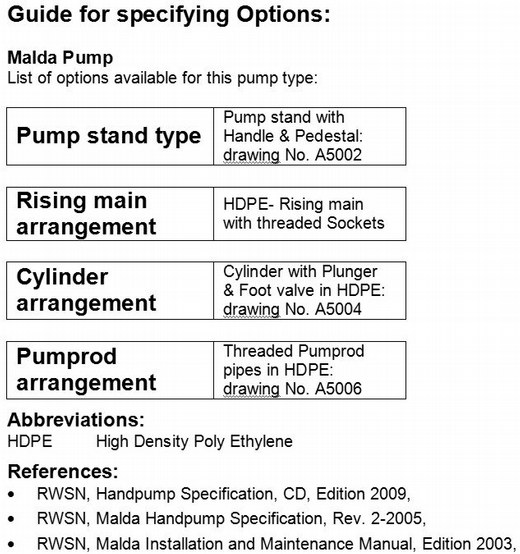
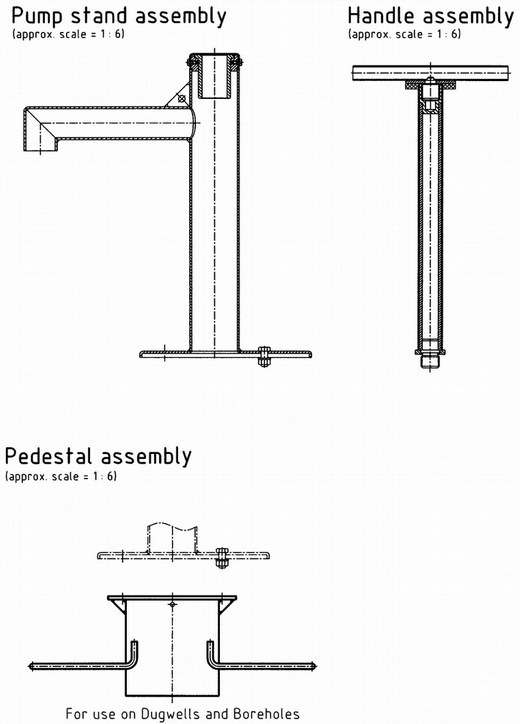
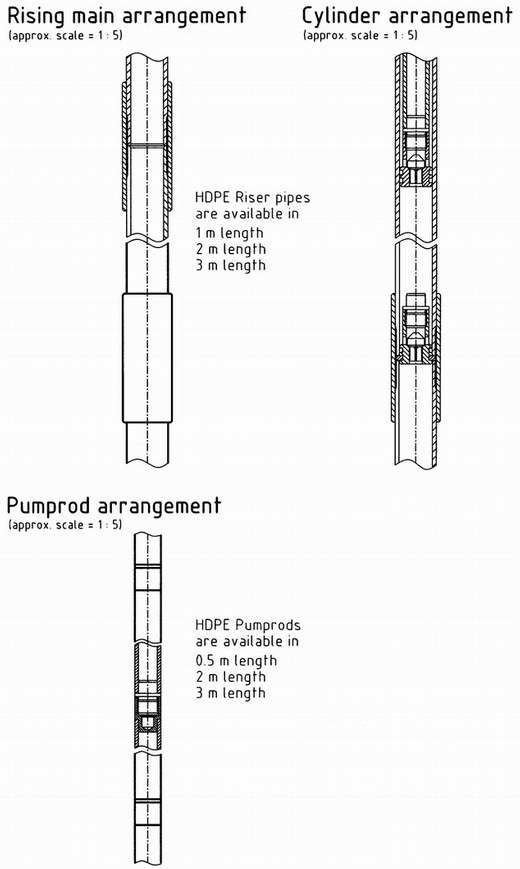

 Google Übersetzer
Google Übersetzer
